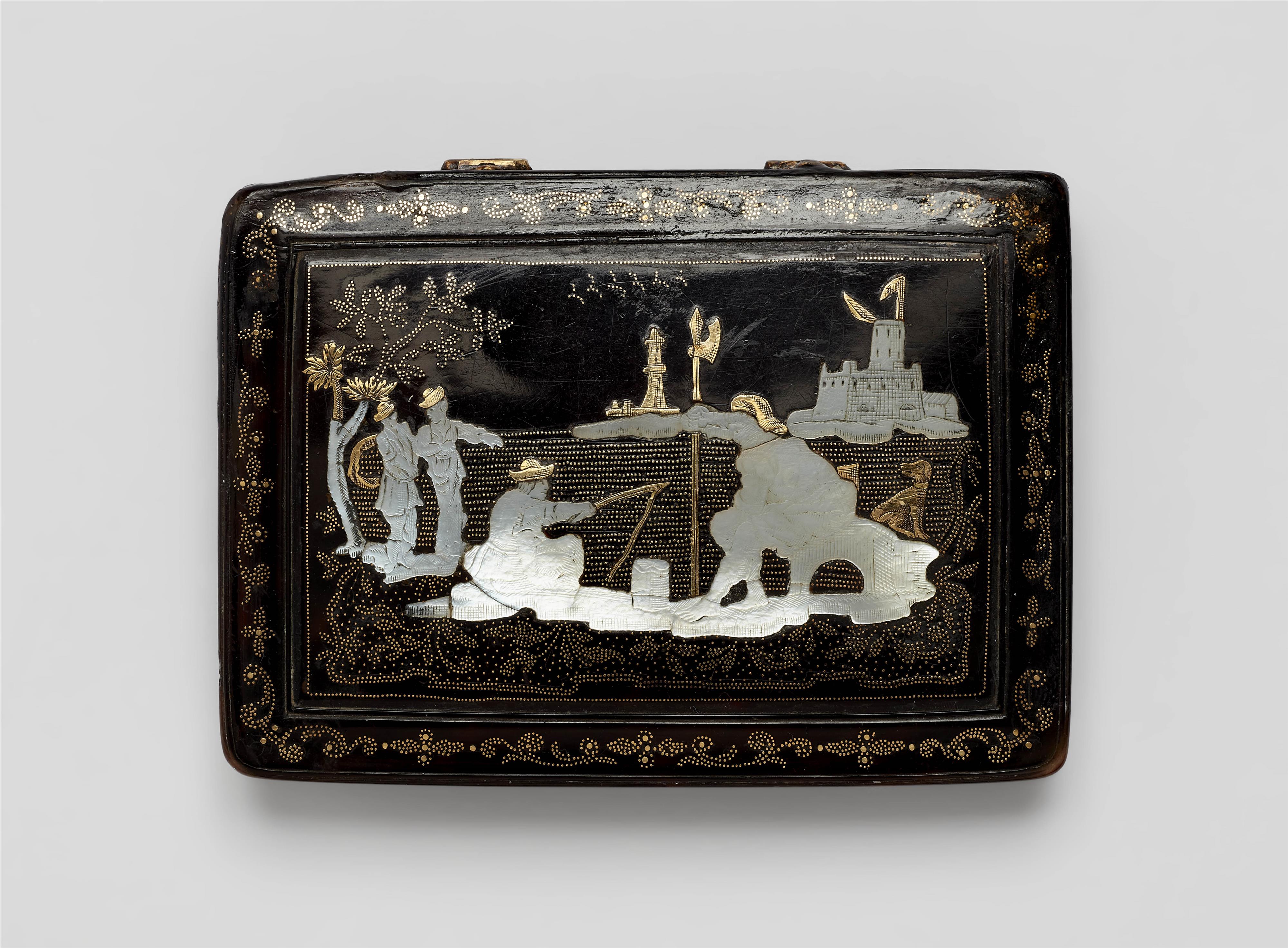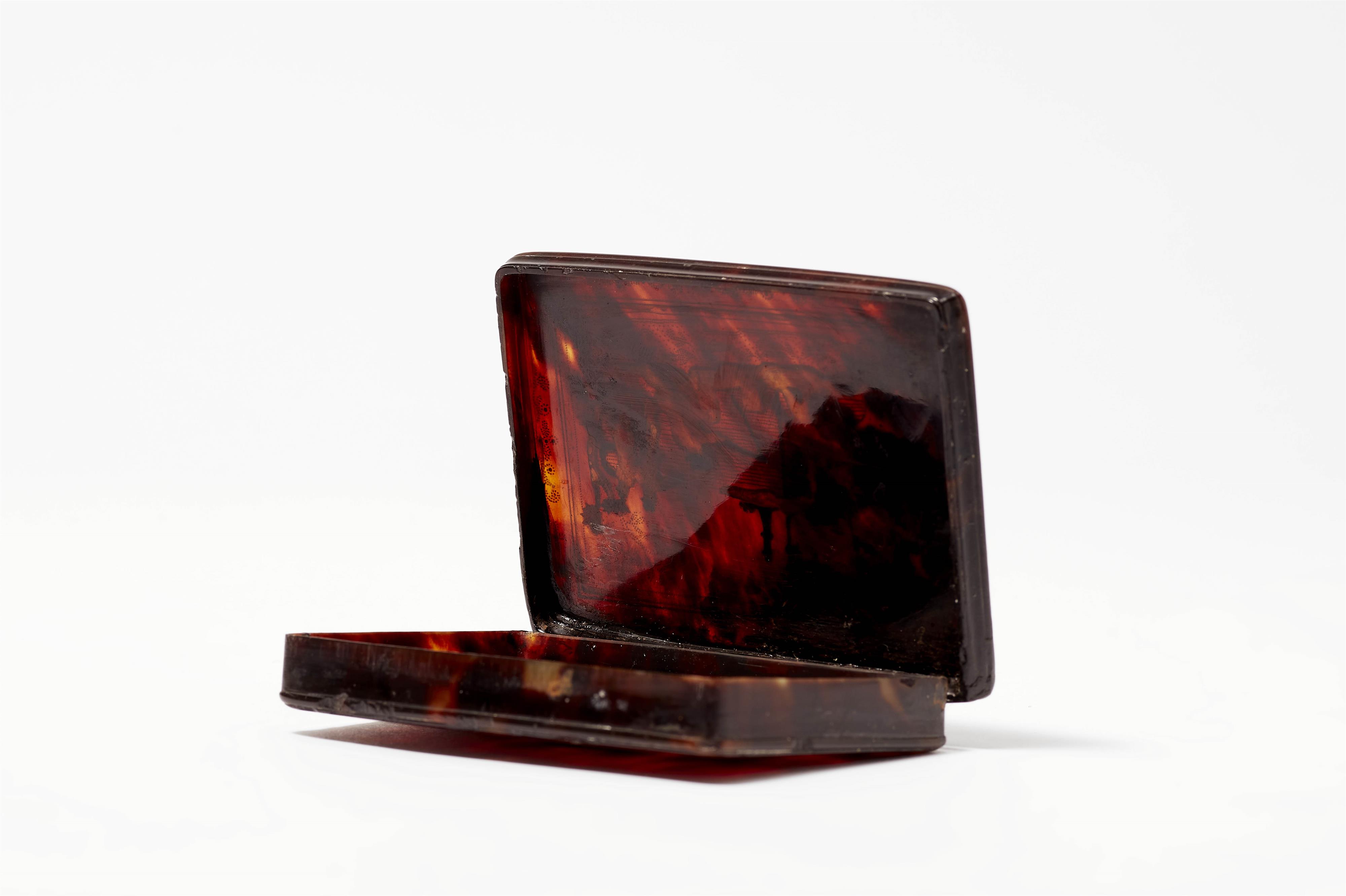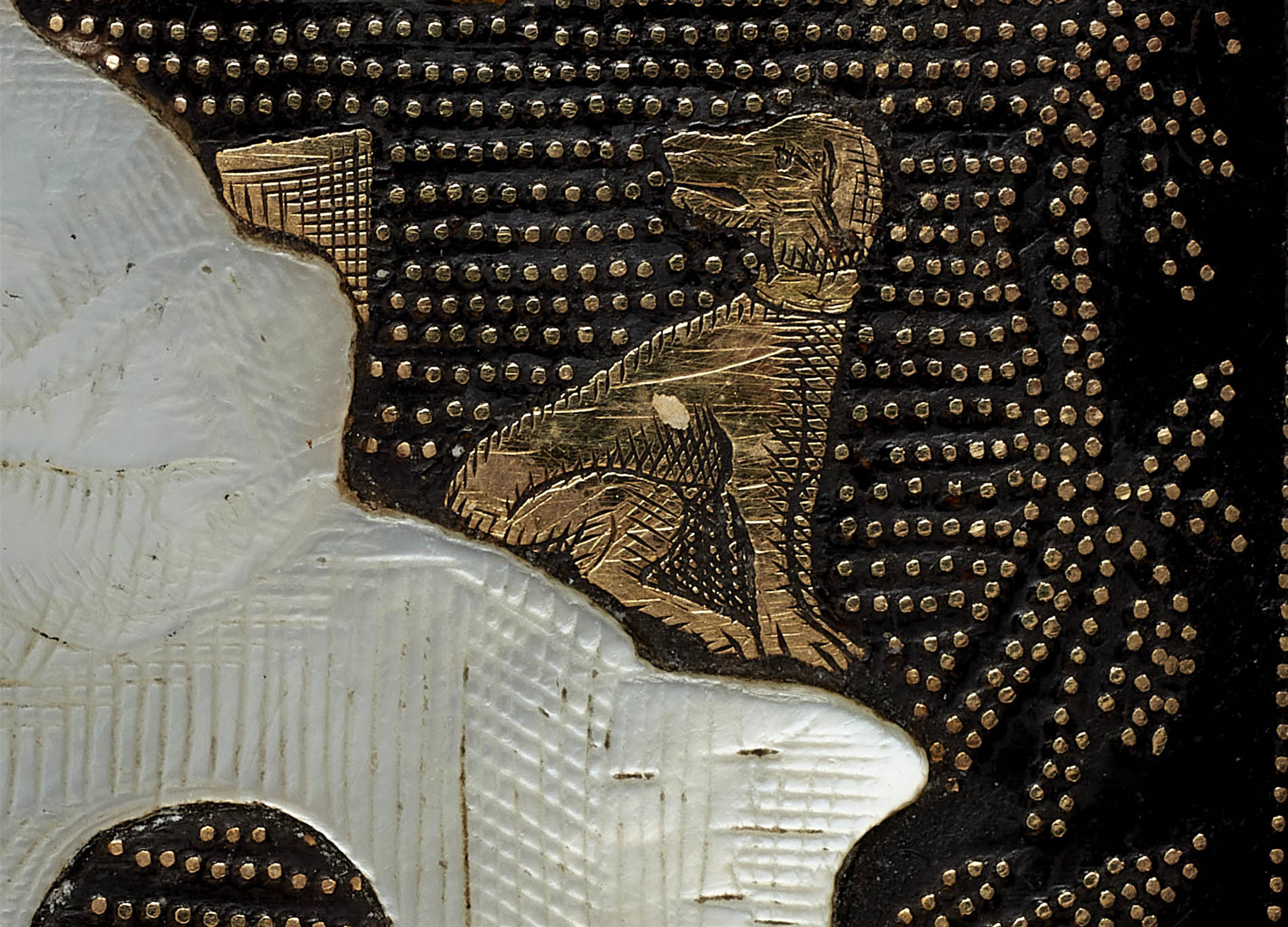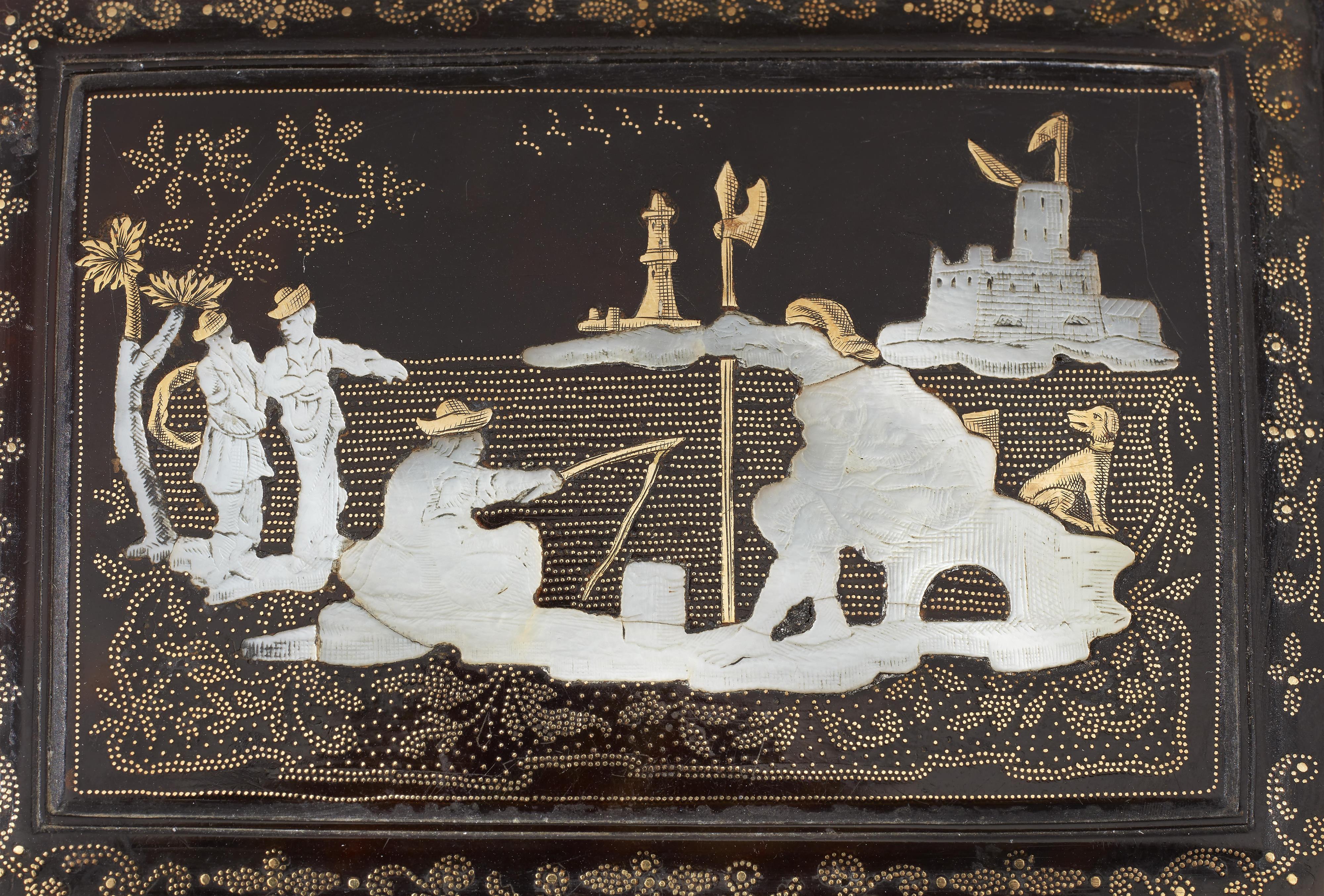An inalid gold piqué snuff box
Tortoiseshell box inlaid with gold and mother-of-pearl with gilt brass mountings. The lid decorated with a finely engraved and inlaid southern landscape with figures and a dog. With tiny chips around the rim. H 1.2, W 8, D 5.8 cm.
Attributed to Naples, 2nd quarter 18th C.
Beginning in the 17th century, Naples developed into a centre for the production of objets d'art in exotic materials such as coral and tortoiseshell, specialising in the finest marquetry. Demand increased in the 18th century, not least due to the influx of tourists on the Grand Tour. Workshops such as those of Della Torre and Sarao perfected the piqué technique, creating breathtaking artworks with the finest details. Tortoiseshell lent itself as a base material for piqué because it could be easily bent and drilled or opened for the small gold inlays by heating it, and when the material cooled down, it closed again. It is thanks to this technique that the objects are still perfectly preserved today.
Provenance
With a label of the former "Sammlung R.S.P. 829" on the inside.
Acquired from Georg Laue art dealers, Munich.
From the property of a South German aristocrat.
Literature
Cf. Los LLanos/Grégoire, Boîtes en or et objects de vertu. Musée Cognacq-Jay Les Collections, Paris 2011, cat. no. 221, for a snuff box in the same form without inlays, attributed to France, around 1730-40.
Cf. Kugel, Complètement Piqué. Le fol art de l'écaille à lacourt de Naples, Milan-Paris 2018, cat. no. 30, for two similarly decorated boxes attributed to Giuseppe Sarao, around 1735-45.
Cf. also The Metropolitan Museum of Art New York, inv. no. 03.26.6.








